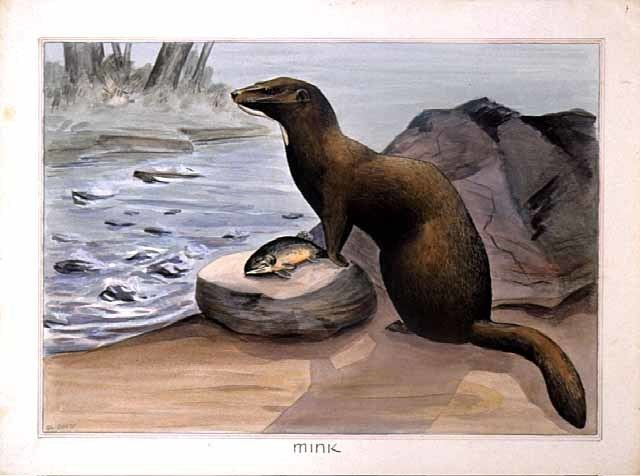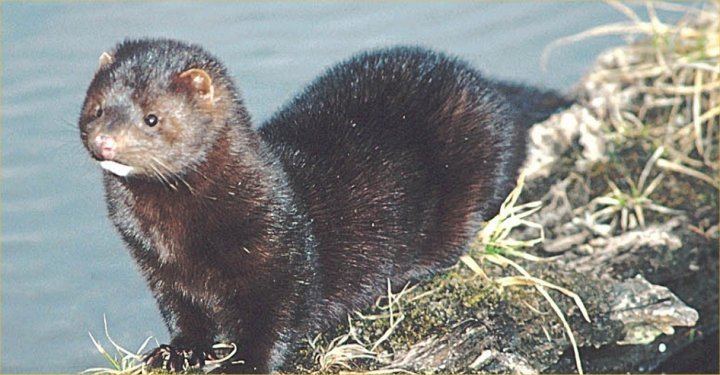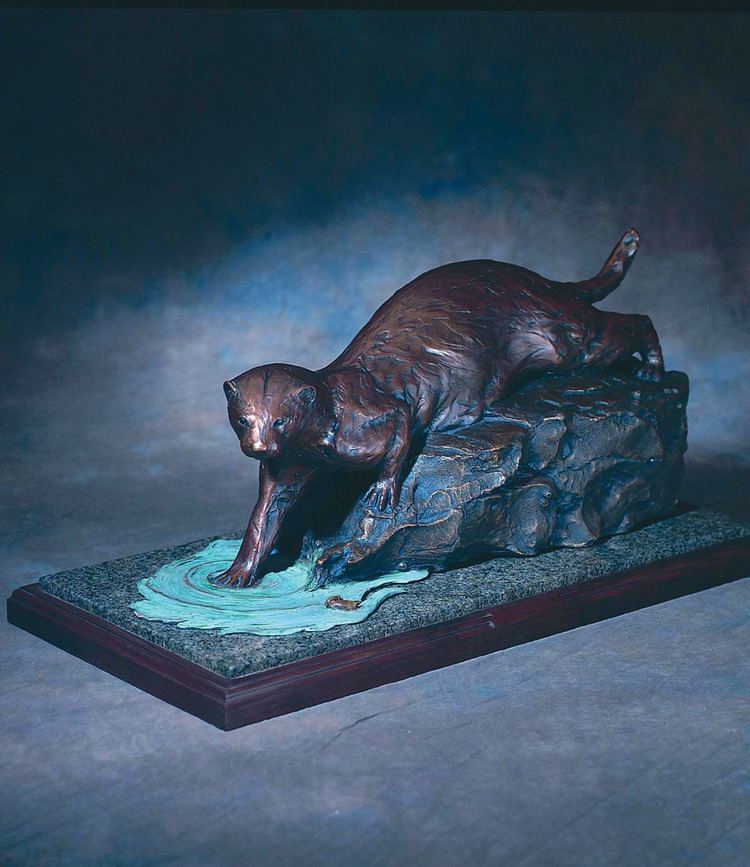Scientific name Neovison macrodon Rank Species | Genus Neovison Higher classification Neovison | |
 | ||
Similar Mammal, Neovison, Mustelids, Carnivores, White‑footed rabbit‑rat | ||
Extinction diaries episode three sea mink
The sea mink (Neovison macrodon) is an extinct North American member of the family Mustelidae. It is the only mustelid, and one of only two terrestrial mammal species in the order Carnivora known to have become extinct in historic times (the other being the Falkland Islands wolf). The body of the sea mink was significantly longer than that of the closely related American mink (N. vison), and also bulkier, leading to a pelt that was almost twice the size of the other species. The longest specimen recorded was said to be 82.6 cm (32.5 in). The sea mink produced a distinctive odor, and had fur that was said to be coarser and redder than the American mink's.
Contents
- Extinction diaries episode three sea mink
- Sea mink transfers
- Taxonomy and range
- Description
- Extinction
- References
Sea mink transfers
Taxonomy and range

Debate has occurred regarding whether the sea mink is its own species, or a subspecies of the American mink. Those who argue that the sea mink is a subspecies often refer to it as Neovison vison macrodon. However, research has been conducted in which the teeth of the sea mink, dating back 5000 to 250 years ago, were compared with 158 other mink species. It found a substantial difference in dental proportions between N. macrodon and N. vison, comparable to the dental differences between pairs of related species. The sea minks' back teeth were broader than those of the American mink, suggesting the sea mink had adapted over time to eating harder-bodied prey. This suggests reproductive isolation, an independent evolutionary direction, and ultimately, support for the hypothesis that sea minks are their own species Neovison macrodon.

Sea minks were marine mammals that lived around the rocky coasts of New England and Atlantic Canada. They inhabited the shores of New England and the Maritime Provinces until hunted to extinction in the 19th century. They were not a truly marine species, being confined to coastal waters. However, the sea mink was unusually aquatic compared to other members of Musteloidea, being, next to otters, the most aquatic member of the taxon. Their ancestors rapidly evolved towards a marine environment in the late Cenozoic in coastal Eastern North America, from Massachusetts to the Maritime Provinces. The oldest specimens date back to 5,000 years ago.
Description

The sea mink was the largest of the minks. Its skull had a wide rostrum, large opening of anterior nares, large antorbital foramina, and very large teeth. This species skull was easily distinguishable from the American mink because of its large size and bigger teeth. The sea mink was hunted to extinction before it was formally described by scientists. Its relatives give a general idea of what this semiaquatic weasel looked like. Accounts from locals to the New England/Atlantic Canadian regions say that the sea mink had a fatter body than that of the American mink. Furthermore, it had reddish fur, and its tail was bushy. This larger body and fur made it very profitable and desirable to fur trappers.

Many skeletal remains of this mink have been found off the New England coast. The sea mink served as food for the Native American tribes that once lived there. These minks are described as large and heavily built, with a low sagittal crest and short, wide postorbital processes. Fragmentary skeletal remains of the sea mink leave most of its external measurements to speculation.
Similar to the European mink and the American mink, the sea mink’s diet consisted of seabirds, most likely the Labrador duck, seabird eggs, hard-bodied marine invertebrates, and in some cases insects. Since the sea mink was larger than the other two species of Mustelidae it is assumed that it ate in greater proportions.
The sea mink was characterized by its solitary, territorial nature. Males were known to be particularly aggressive towards each other, marking territories with specific scents along a shoreline. In the event of trespassing, violent confrontations would occur. At the same time, males and females both lived promiscuous lifestyles, oftentimes mating with multiple partners especially during late spring, April to May timeframe.
The litter of pups, usually blind and helpless, were supported by the mother for a period of 13–14 weeks. However, many external threats affected the development of the baby pups, and high mortality rates were not uncommon.
Extinction
The sea mink was hunted to extinction to satisfy the demand of the European fur market, and due to their larger size they were more desirable than other mink species. Fur traders made traps to catch the sea minks and also pursued them with dogs. Before the maritime fur trade, Native Americans would capture the animals for their pelts and flesh. A large contributing factor to the eventual extinction of the sea mink was the unregulated hunting and harvesting of these animals. Another possible contributing factor was the high mortality rate of the young. Ultimately, the sea mink became extinct sometime between 1860 and 1870.
